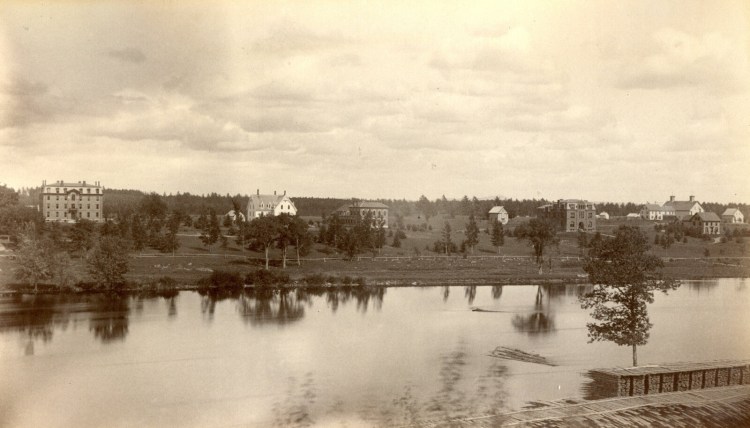Sept. 21, 1749: Nine members of the Kennebeck Proprietors, the legal heirs of Pilgrims who had obtained rights to land in the Kennebec River valley, meet at the Royal Exchange Tavern in Boston.

The meeting results in the commissioning of land surveys and authorizes the initiation of lawsuits against squatters and competitors. Friction between landowners and squatters, and occasional violence resulting from that friction, will become a catalyst affecting Maine politics well into the early 19th century.
Sept. 21, 1774: Several months before the start of the American Revolution, Cumberland County Sheriff William Tyng tells participants at an impromptu county convention in Falmouth (now Portland) that he will not uphold recently passed British laws unless he has the general consent of the county to do so.
The convention advocates the convening of a Massachusetts provincial congress to discuss dissatisfaction with British laws. That gathering occurs on Oct. 5, less than two weeks later.
Sept. 21, 1868: Having been established three years earlier as a land grant college under the Morrill Act, the Maine State College of Agriculture and the Mechanical Arts opens in Orono, admitting its first 12 students. In 1897 its name becomes the University of Maine.
Gov. Samuel Cony signed the bill creating the college in February 1865. In January 1867, the board of trustees received a report from nationally famed architect Frederick Law Olmsted that recommends setting up the campus like a village. White Hall, the campus’s first building, was built in 1867-68.
The first students are expected to cover part of their expenses by working up to three hours per day on the college’s farm. In 1868 the farm produces 90 tons of hay, 1,100 bushels of potatoes and 85 bushels of barley.
Attendance at chapel is mandatory.
Six students receive degrees in the first graduation, which is held in 1872. Women are admitted to all curricula starting that year.
The first master’s degree is awarded in 1881. Also that year, Maine residents are required to pay tuition charges for the first time. The number of new enrollees declines from 50 to 17.
In 1886, the school’s entire cow herd is exterminated because of tuberculosis.
In 1902, Adelbert Sprague, a UMaine student, composes the music of the “Maine Stein Song.” His roommate Lincoln Colcord writes the words. Singer Rudy Vallee, a former UMaine student, makes the song a national hit in 1929.
The Smith-Lever Act of 1914 mandates that the university provide service beyond its campus through farm extension, home demonstration, publication, and lectures. The University of Maine Cooperative Extension still does that today.
The university’s first doctoral degree is awarded in 1960.
Notable University of Maine alumni include basketball player Cindy Blodgett, novelist Stephen King, former U.S. Sen. Olympia Snowe, and personal computer designer Chuck Peddle.
Joseph Owen is an author, retired newspaper editor and board member of the Kennebec Historical Society. Owen’s book, “This Day in Maine,” can be ordered at islandportpress.com. To get a signed copy use promo code signedbyjoe at checkout. Joe can be contacted at: jowen@mainetoday.com.
Send questions/comments to the editors.



Success. Please wait for the page to reload. If the page does not reload within 5 seconds, please refresh the page.
Enter your email and password to access comments.
Hi, to comment on stories you must . This profile is in addition to your subscription and website login.
Already have a commenting profile? .
Invalid username/password.
Please check your email to confirm and complete your registration.
Only subscribers are eligible to post comments. Please subscribe or login first for digital access. Here’s why.
Use the form below to reset your password. When you've submitted your account email, we will send an email with a reset code.